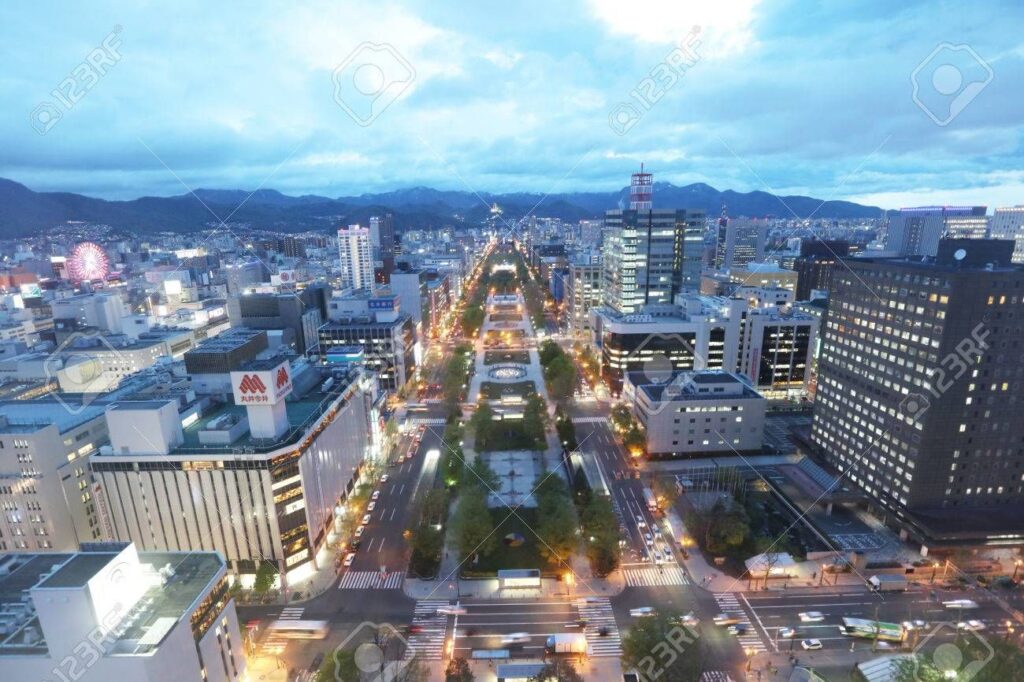
Sapporo is an unusual city, not because of its excellent and unique climate, culture, location, or food. The city is unusual because of its rich history. It was founded officially in 1868. However, the prefectural government approached the United States to help develop the city’s blank canvas. This development resulted in an unusual city structure that might be familiar to you when visiting Sapporo.
How is transport in Sapporo?
The New Chitose International airport serves Sapporo and is located thirty miles southeast of the city. Despite the airport’s miniature stature, the air corridor between the airport and Haneda in Tokyo is the third busiest passenger air route globally. Nine million people fly yearly between the two cities making up almost half of the airport’s total traffic.
Whether going into or out of the New Chitose airport, it is a highly efficient airport with strong public links to the city center. The rapid airport service leaves the airport train station every fifteen minutes after their arrival. The thirty-seven-minute journey might cost approximately a thousand dollars, and you can pay using your ticket or IC card. Terminals at the airport sell tickets, which you may buy.
Alternatively, you could use limousine buses operating door-to-door shuttle services from domestic and international terminals to various hotels and landmarks in Sapporo. The journey can last up to an hour, depending on your destination. The buses are clean and comfortable. Most of all, be warned of taxis that might be pretty costly.
Navigating through Sapporo
Sapporo’s unique grid system makes navigating the city extremely easy. Street addresses use the North X West Y format. Similarly, the other two subway lines adhere to the same pattern, with a non-vocal line running from north to south and a tozai line running East to West along Odori, the city’s main thoroughfare.
How to get food in Sapporo
Japanese food is ridiculous. A wide variety of foods are offered in Japan, to the extent that some of the foods go unrecognizable when compared to each other. Sapporo is not an exception. The geology and climate of the Island support various ranges of livestock and crop, leading to new culinary methods. As a result, the food culture in Sapporo is familiar with some elements of uniqueness.
Nijjo market is an ideal place to experience the best of Sapporo’s food offerings. Most of the food available in the market is locally sourced and cooked with standard Japanese cookware. Some of the foods are priced quite highly. Therefore, it would be best to ask or pay first before ordering or eating.
How do you keep your budget low when visiting Sapporo?
Japan is known as a costly country. This situation is justified and made more complicated by massive volatility in the exchange market. So, it is challenging to view Japan as costly or not.
However, the further you move away from Tokyo you may get a slightly more affordable lifestyle than when you are closer to Tokyo. If you are working on a budget, you may consider taking your trip off the city to other areas, such as open-air food markets.
Most of all, while in many western countries, tipping might seem normal, it is not allowed in Sapporo and other places in Japan. Regardless of the quality of service a server offers, you should only enjoy the experience and not go beyond the enjoyment. Sapporo city is primarily known as a historic place because of its rich history.

